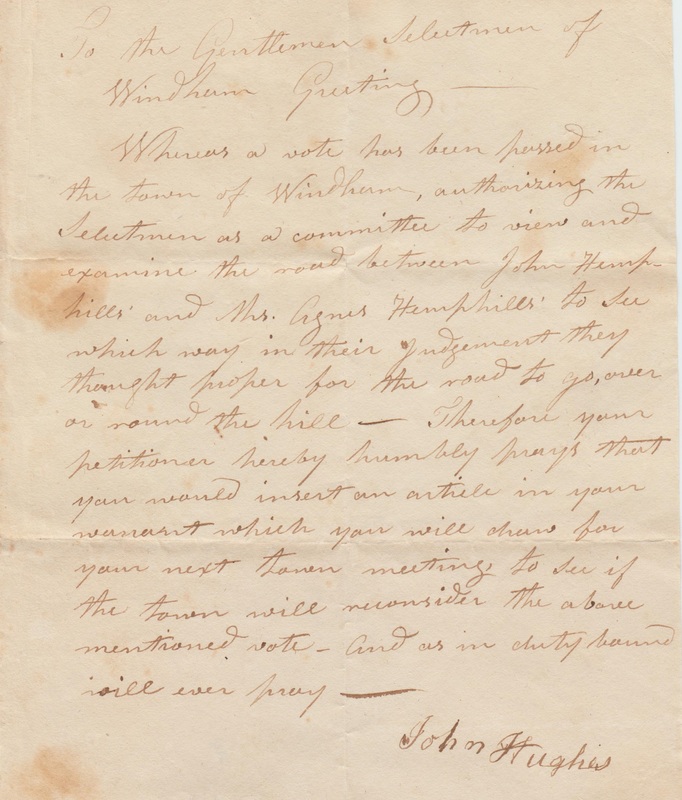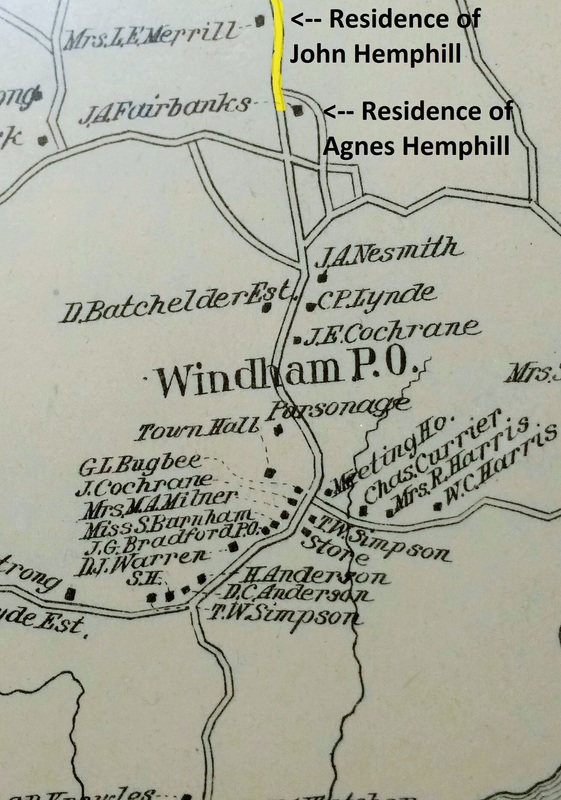John Hemphill was born in Windham on June 10, 1766 to parents, Jane and Robert Hemphill. He is recorded in Morrison's "History of Windham" as having, "possessed in a marked degree all the characteristics of the Scotch Race. His speech had the deep Scotch brogue. He was a fine bass singer; his voice was strong, rich, and melodious, and could be distinctly heard in a large choir; was a good violinist". On February 14, 1797, he married Lydia Merrill who was born in town on August 17, 1770. In 1809, John was listed as being on the committee for inspecting Windham's schools. John died on August 26, 1838 at the age of 82, and his wife outlived him by several years, passing away on November 8, 1856 at the age of 86.
Nathaniel Hemphill earned his title of captain for his work with the New Hampshire Training Band during the Revolutionary War. He died in 1796 to lung fever. According to Morrison, Agnes was a woman, "with great mental strength and physical endurance, she managed, unaided, the affairs of her large family for eighteen years". Morrison also relates an interesting story about Agnes and her daughters: each of her daughters had a spinning wheel on which they would spin linen into thread, all together in one room that also served as the family's kitchen. They would spent about three months accumulating "webs of cloth", which would be sold in Salem, MA by Agnes who would ride, alone, on horseback at 2 AM as it took almost a full day to arrive at the market. The trip would take an additional two days; one day being allotted for trading and another day to return home. She died on July 3, 1838.
John Hughes, the writer of the document, is recorded by Morrison as having been, "a prudent and careful man in his business...[and] was a kind, accommodating neighbor and a good citizen".
Now back to the story of the road. The road that was constructed according the to the document would have been a stretch of road that is now North Lowell Road. The map below is a portion of an 1890s map of Windham. The yellow portion of the road indicates approximately where the road would have been built.

